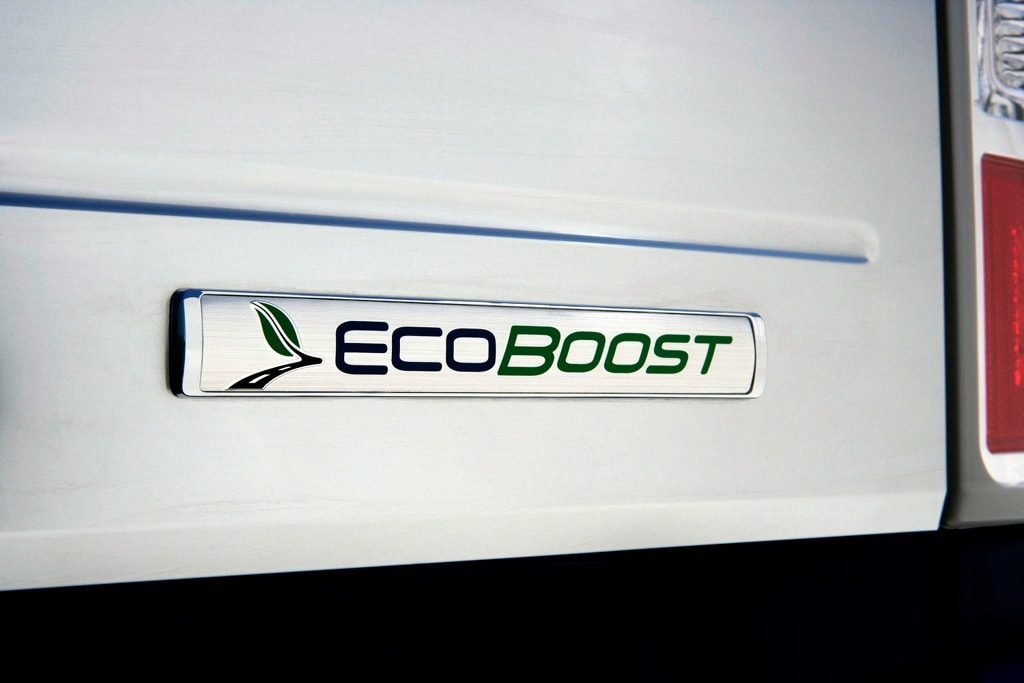Ford is giving us a preview of what the next generation of fuel-efficient EcoBoost engines will bring to the market, showing the deep connection between gasoline and diesel engine technology.
“The first generation of EcoBoost applied some of the key technologies found in powerful diesel engines – such as direct injection and turbocharging – and optimized them for the gasoline engine,” said Bob Fascetti, Ford’s director of large gas and diesel engine engineering. “The next generation of EcoBoost engines will continue that path to deliver more power and even better fuel economy with lower emissions, which are key customer benefits of EcoBoost technology.”
Ford is currently studying technologies like cooled EGR (exhaust gas recirculation), which uses an heat exchanger to cool exhaust gas before pumping it back into the cylinders, lowering the combustion temperature. The automaker is also testing advanced forms of turbocharging that would further improve combustion efficiency.
The company says that the aforementioned applications would allow the following generation of EcoBoost units to deliver more power while reducing fuel consumption by five percent. Ford’s current EcoBoost powerplants (the 2.0 liter l4 and the 3.5 liter v6) offer between 10 and 20 percent better fuel economy than comparable naturally aspirated V6 and V8 engines.
The EcoBoost engines share multiple technologies with modern diesel engines, such as high pressure fuel injection and special pistons with optimized bowls and oil cooling. These have been specially adapted for gasoline combustion.
“An EcoBoost engine has much higher operating temperatures than a diesel engine,” said Brett Hinds, manager of Ford’s advanced engine design. “Many parts had to be upgraded to special metals and alloys that hold up to that environment. Our exhaust manifolds, for example, are made of stainless steel, and the turbochargers are made from high-temperature cast-iron alloy.”
The future will see Ford expand its range of fuel-efficient engines in order to be more competitive on the market.
“We’re introducing about 30 powertrains over the next couple of years to power everything from small cars to large pickup trucks,” said Fascetti. “Our experience with a wide range of engines allows us to take the best solutions and apply them to many platforms to benefit the customer.”
“The first generation of EcoBoost applied some of the key technologies found in powerful diesel engines – such as direct injection and turbocharging – and optimized them for the gasoline engine,” said Bob Fascetti, Ford’s director of large gas and diesel engine engineering. “The next generation of EcoBoost engines will continue that path to deliver more power and even better fuel economy with lower emissions, which are key customer benefits of EcoBoost technology.”
Ford is currently studying technologies like cooled EGR (exhaust gas recirculation), which uses an heat exchanger to cool exhaust gas before pumping it back into the cylinders, lowering the combustion temperature. The automaker is also testing advanced forms of turbocharging that would further improve combustion efficiency.
The company says that the aforementioned applications would allow the following generation of EcoBoost units to deliver more power while reducing fuel consumption by five percent. Ford’s current EcoBoost powerplants (the 2.0 liter l4 and the 3.5 liter v6) offer between 10 and 20 percent better fuel economy than comparable naturally aspirated V6 and V8 engines.
The EcoBoost engines share multiple technologies with modern diesel engines, such as high pressure fuel injection and special pistons with optimized bowls and oil cooling. These have been specially adapted for gasoline combustion.
“An EcoBoost engine has much higher operating temperatures than a diesel engine,” said Brett Hinds, manager of Ford’s advanced engine design. “Many parts had to be upgraded to special metals and alloys that hold up to that environment. Our exhaust manifolds, for example, are made of stainless steel, and the turbochargers are made from high-temperature cast-iron alloy.”
The future will see Ford expand its range of fuel-efficient engines in order to be more competitive on the market.
“We’re introducing about 30 powertrains over the next couple of years to power everything from small cars to large pickup trucks,” said Fascetti. “Our experience with a wide range of engines allows us to take the best solutions and apply them to many platforms to benefit the customer.”

